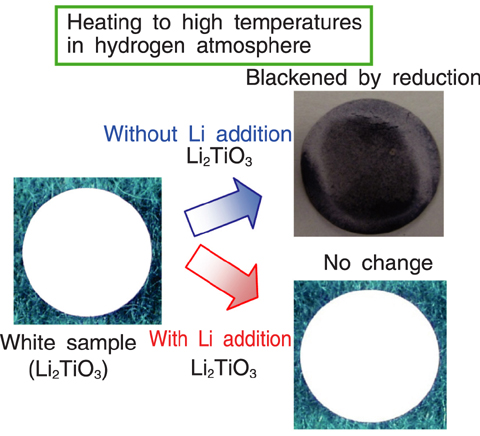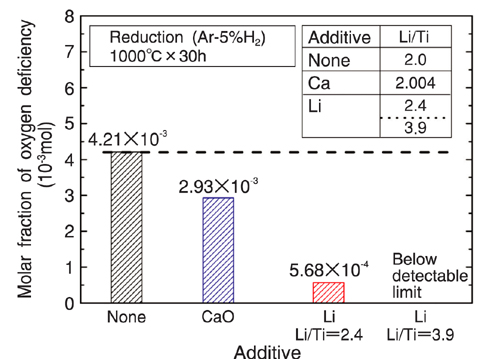
Fig.3-17 Color of Li2TiO3 after heating to high temperatures in hydrogen atmosphere

Fig.3-18 Molar fraction of oxygen deficiency of Li2TiO3 with different additives
D-T fusion reactors need deuterium (D) and tritium (T) as their fuel. Since tritium does not exist in nature, it is necessary to produce tritium artificially by neutron irradiation of a lithium-filled blanket.
Lithium titanate (Li2TiO3) has been recognized as one of the primary candidates for tritium breeding materials because of its good tritium release and its low activation. Addition of H2 to the inert sweep gas at the blanket has been proposed for enhancing the release of the generated tritium from the breeder material. However, Li2TiO3 is reduced in a H2 atmosphere at an operating temperature above 600°C, which will lead to degradation of the tritium release characteristics. The reduction of Ti in Li2TiO3 from Ti4+ to Ti3+ is accompanied by mass decrease due to decrease in oxygen content of Li2TiO3. In a previous study, Li2TiO3 (Li/Ti > 2.0) to which CaO was added exhibited smaller oxygen deficiency than Li2TiO3 without such addition. As the next research step, development of Li2TiO3 with excess Li was attempted to improve its resistance to deoxidization at high temperatures.
Usually, solid state reaction of Li2CO3 and TiO2 is used in the synthesis of Li2TiO3. However, Li addition by solid state reaction was found to be difficult. In the present study, we have developed a new process, in which Li alkoxide and Ti alkoxide are mixed to add Li2O to Li2TiO3 .
Fig.3-17 shows a photograph of Li2TiO3 samples heated in hydrogen atmosphere at high temperatures. The color of a Li2TiO3 sample changed black, while that of a Li2TiO3 sample with added Li remained white. This black discoloration indicates valence change from Ti4+ to Ti3+, which accompanies decrease in the oxygen content of the sample.
Fig.3-18 compares the molar fraction of oxygen deficiency of the Li2TiO3 with added Li to Li2TiO3 of our previous study with added CaO. The molar fraction of oxygen deficiency increased as the molecular ratio Li/Ti decreased. The result for Li/Ti = 3.9 indicated no oxygen vacancies.
The overall results indicated that Li addition is very effective in suppressing oxygen deficiency. Thus, an advanced tritium breeding material for high temperature use in fusion reactors has been developed through successful synthesis of Li2TiO3 with added Li.